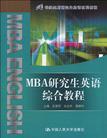MBA研究生英语综合教程
出版时间:2009-10 出版社:中国人民大学出版社 作者:王慧莉 等主编 页数:333
前言
近年来,全国工商管理硕士(MBA)的招生人数逐年增长,因此教材的编写也应该做出相应的调整,以适应MBA英语课程的需求。 MBA英语课程一般采用集中授课的形式,在有限的时间内让学生真正学到一些实用的东西是非常必要的。所以这一阶段的教学不应是本科英语课程的简单延续,而应是帮助学生真正掌握一些实用的东西。一方面,根据专业的要求,教程的内容需要围绕着工商管理的几个主要方面;另一方面,课文要原汁原味,让学生接触到最真实、最地道的英语。 《MBA研究生英语综合教程》共分为15个单元,内容涵盖全球化、商务战略、公司产品、企业文化、领导能力、企业责任、市场营销、商品品牌、产品广告、有效沟通、管理创新、商务礼仪、企业并购、特许经营、电子商务等。 每个单元分为六个部分。 第一部分:Lead-in,主要为读者提供与本单元内容相关的背景知识及词汇,为参与其他的学习活动做好热身。 第二部分::Reading,所有文章选自近年国外期刊、商务英语出版物的原版文章。为了能让读者更好地理解课文内容和掌握相关词汇,课文之后设计了多种练习形式。 第三部分:Listening,提供和本单元内容相关的各种场景下的对话和独白,设计了简单实用的练习形式,旨在训练读者的听力。 第四部分:Speaking,设计了和本单元内容相关的口语活动,并提供了完成口语活动所需的常用表达法,供学习者学习模仿,力求帮助学生在“学中用,用中学”。 第五部分:Writing,设计了和本单元内容相关的写作练习,文体大部分是应用文。 第六部分:Case Study,提供了一篇和本单元内容相关的案例,供读者讨论,提出自己的看法、观点及解决办法。体现用英语作为工具来解决问题的指导思想,从而更好地帮助学生做到“学中用,用中学”。 为了便于使用与学习,每单元后面都列出了本单元出现的常用单词和生词,供读者查阅。 尽管本书的编写力求准确、实用,但限于编者水平,书中定有许多需进一步改进和完善之处,祈请各位同行和广大读者批评指正。 本书要特别感谢美国洛杉矶加州州立大学的Jose L.Galvan教授,他对本书进行了通读和审阅,并提供了宝贵的修改意见。
内容概要
MBA英语课程一般采用集中授课的形式,在有限的时间内让学生真正学到一些实用的东西是非常必要的。所以这一阶段的教学不应是本科英语课程的简单延续,而应是帮助学生真正掌握一些实用的东西。一方面,根据专业的要求,教程的内容需要围绕着工商管理的几个主要方面;另一方面,课文要原汁原味,让学生接触到最真实、最地道的英语。 《MBA研究生英语综合教程》共分为15个单元,内容涵盖全球化、商务战略、公司产品、企业文化、领导能力、企业责任、市场营销、商品品牌、产品广告、有效沟通、管理创新、商务礼仪、企业并购、特许经营、电子商务等。
书籍目录
Unit One GlobalizationUnit Two Business StrategyUnit Three Company and ProductUnit Four Corporate CultureUnit Five LeadershipUnit Six Corporate CitizenshipUnit Seven MarketingUnit Eight BrandsUnit Nine Product and Corporate AdvertisingUnit Ten Effective CommunicationUnit Eleven Management CreativityUnit Twelve International Business StylesUnit Thirteen Mergers and AcquisitionsUnit Fourteen FranchisingUnit Fifteen Electronic Business
章节摘录
[9] By contrast a marketing audit starts with market share analysis by customer segment andlinks this to changing trends in customer needs: wants and preferences and company positioningwith respect to these changes. In other words: it starts with customer trouble and links it to marketshare decline and changing customer trends in the marketplace. [ 10] Notice the difference. By the time the business audit is done: the company is thrustaway from its current core business to new core opportunities. That is a change in the businessmodel! By contrast: by the time the marketing audit is done the company sees that it has lostmarket share and value in old target and discovers new target segments within its core industry. Itdoes not have to change its core business: only its marketing model. [11] Business strategy then proceeds to selecting a future core business portfolio: whilesalvaging current core businesses. Marketing strategy: on the other hand: selects attractivecustomer targets and researches their needs and wants for new product features and design: newways customers want to access and feel about these products and the price they will exchange forthese new values. The company does not have to depart from its industry or business. It just hasto become more customer focused. [12] Business strategy then propounds long-term strategies (3-5 years) for the new corebusiness portfolio. Marketing strategy: on the other hand: uses R&D to launch new products andrelated services: new distribution polices and improved networks and sales management: newbrand campaigns and promotion and new pricing policies. These are short-term and near-termtactics (1-2 years) that can improve profitability quickly. [13] Business strategy then proceeds to restructure the company for its new long-termbusiness portfolio. This is costly and irreversible. It requires a new long-term debt structure.Marketing implementation will require organizational improvement and resource investment in itsholistie marketing budget. Companies monitor their marketing success and retain the flexibilityto make adjustments in performance. Marketing implementation does not require organizationaland financial restructuring. [14] I have reduced the difference between the two disciplines of business strategy andmarketing strategy to a nutshell: because I want to make it easy to understand. There are manymore details that I cannot cover here. Most of the large companies that I have known in China donot really understand this difference. They tend to overdose on strategy: instead of treating theirproblem with marketing plans and implementation. [15] Lets look at some classic examples of this difference. Nike and Starbucks have neverchanged their business strategy from day on. Nike never manufactured a shoe: but has devoteditself consistently to marketing research for new designs and fabulous programs of promotion:distribution and pricing. Starbucks started in the coffee business and is still in the coffee businessall over the world.
图书封面
评论、评分、阅读与下载
用户评论 (总计7条)
- 课程备书,品质挺好。送货及时。
- 书已经收到,没有任何问题。非常满意。
- 刚看了一小部分,挺满意的!
- 帮朋友买的,发货速度很快,应该是正版。以后还会在当当买书
- 课程不是很难,也相对适用
- 作为教材,是本不错的书籍,如果配有课文的录音就更好了。教材只有课后习题的录音
- 内容很好没得说,就是文字排版的版面我不太喜欢,纸张不漂亮。
